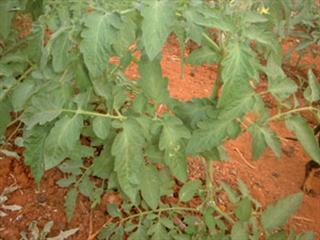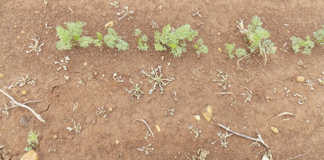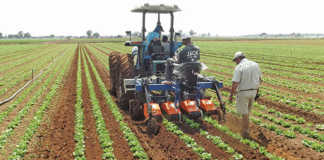
They were amazed at our yields – and astounded by how little fertiliser we’d used. Think of the money they’d save if they used the same rates, they said. Deep down, though, I suspect they remained unconvinced, and would continue to apply more fertiliser than needed, thinking this would ensure a bigger crop. The irony is this can, more often than not, reduce the crop!
This aside, the growers’ scepticism was understandable. Tomatoes are a high value, high cost crop. Consequently, many fertiliser recommendations are on the high side, with some companies presenting trial results showing a correlation between extremely high rates of fertiliser application and good yields.
But such results are often achieved by having certain elements in the fertiliser in the correct proportions so as to achieve good yields regardless of the rates of application. The fact is, it’s possible to get equal, or better, results with much lower applications.
Soil analysis
As I’ve mentioned on a number of occasions, you should base your fertilisation programme on a soil analysis, not on perceived crop requirements. In other words, you fertilise the soil and not the crop. You need to identify which elements must be restored to their correct levels and kept in balance with the other elements. Most crops will grow very happily, then, and it’s only a matter of regulating the nitrogen and, perhaps, potassium.
In addition to the basic elements, organic matter plays an important role in the health of the crop as well as the utilisation of the mineral fertility. The soil pH is also important to satisfy both the crop’s requirements as well as the availability of certain nutrients. The soil analysis will help to save money and maximise yield.
The next important factor is the top-dressing. Use too little nitrogen, and the plant will make lots of flowers, but set fewer fruit, as it ‘perceives’ that it won’t have enough energy to bring them all to seed maturity. Too much nitrogen early on stimulates vegetative growth at the expense of fruit.
There should be just enough nitrogen to ensure a healthy, medium dark-green colour. Too lush and dark will mean a lower yield. The plants ‘focus’ on foliage growth first, and only produce more fruit when they are well established. This may be beneficial in the wild, but not under cultivation.
Vigour
Watch the colour and vigour of your crop constantly. To complicate matters, every variety will differ slightly in its response to nitrogen fertiliser due to the natural vigour of the variety and size of the root system. Also keep an eye on the plant’s ability to fill trusses. At an advanced stage, the plant needs more nitrogen because there’s a lot of foliage and fruit to fill.
When young transplants are planted into fertilised soil, not much nitrogen is required as the land preparation phase will have caused the microbial life to break down organic matter and release nitrogen. You can often go for quite a while before a side-dressing is necessary.
Hands-on approach is best
Fertilisation is mostly common sense if you stick to the basics. Unfortunately, too many farmers put preparation of their fertilisation programmes in the hands of ‘experts’ instead of adopting a hands-on approach. If someone presents you with a programme consisting of a long list of weekly applications and/or foliar sprays – beware!
Such programmes give the impression of being based on exhaustive research, but in my experience they’re not. Instead, they’re more about selling fertilisers! This is not to say these programmes will do damage, but neither will they be of much benefit – and will only increase your input costs. There’s no such thing as a ‘one-size-fits-all’ solution when it comes to this subject.
Contact Bill Kerr at [email protected]. Please state ‘Vegetable production’ in the subject line of your email.













